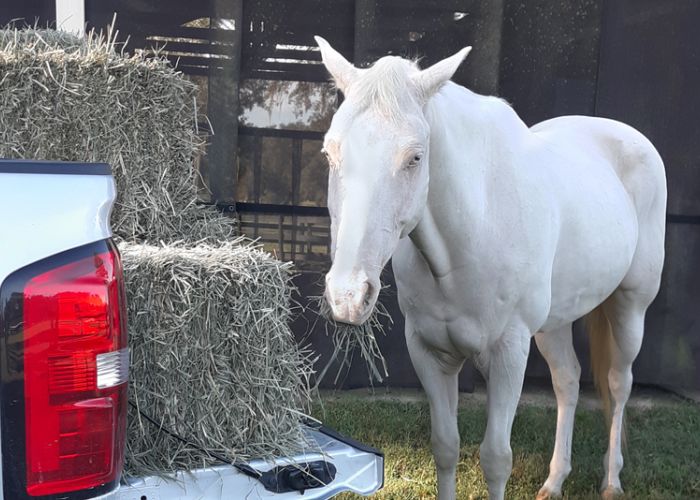Not here, kitty, kitty
Practical solutions can keep community cats away from areas where they’re not welcome

For those of us engaged in trap-neuter-return (TNR) programs, it’s a sad but inescapable fact: Not everyone likes cats. Some people are allergic to them, while others may fear them. And even people with beloved pet cats may view free-roaming community cats as an unwelcome nuisance.
All too often, budding TNR efforts in a neighborhood falter because one or two vocal residents are unhappy about free-roaming cats in their yards. While sterilization is the first and most important step to establishing a more peaceful relationship between cats and people, sometimes you need to go further. Fortunately, a bit of diplomacy and some high- and low-tech solutions can work wonders to resolve conflicts.
Helen Woods, president of Laurel Cats Inc. in Maryland, works in an area where some residents are fearful of cats. By understanding that fear and engaging in respectful conversations, Woods says, she is “able to take a woman who is afraid of cats and empower her with a squirt bottle.” Just a spray of water from an inexpensive plastic bottle keeps the cats at a comfortable distance.
Laurel Cats has also used motion-activated CatStop devices to resolve situations where unhappy neighbors were trapping cats and bringing them to the local animal control agency for euthanasia. CatStops and similar products emit a burst of ultrasonic sound (inaudible to humans) that startles cats who pass into the device’s range. A single device will deter cats from doorways to prevent territorial spraying or aggression between indoor and outdoor cats, but two or three may be needed to keep cats away from flower beds and smaller yards.

Cats can become habituated or learn to maneuver around the device’s trigger, so changing the location or adding other deterrents can improve your chances of success. (If the resident has dogs, you’ll need to take them into consideration when positioning the devices, as they may also be deterred by the sound.) Focus on points of entry to the off-limits area, whether it’s the yard, garden or top of a car.
For larger yards, many TNR groups report success using motion-activated sprinklers like the Contech ScareCrow or Havahart Spray Away. Some devices require access to a water source (like an outdoor spigot) while others use a reservoir, and you can’t use these in cold weather. But year-round use isn’t necessary: It typically takes only a few months before the cats get the message, says Susan Richmond, executive director of Neighborhood Cats in New York City. Afterward, you can remove the device, and the cats will continue to avoid the area.
Sometimes, neighbors’ complaints are focused on cats’ specific behaviors, such as defecating in gardens or loitering around backyard bird feeders. You can make gardens less appealing to cats by placing small-gauge chicken wire just under the soil or using other deterrents that cats find uncomfortable to walk on. Try sharp-edged mulch, a plastic carpet runner with the knobby side up or products like the Cat Scat Mat.
Scent repellents are another option. Gardeners recommend planting a buffer of aromatic plants that cats find offensive, such as the herbs rosemary and rue or the “scaredy cat plant” Coleus canina (make sure any plants aren’t invasive in your area, or keep them in pots). Many TNR practitioners swear by sprinkling coffee grounds or cayenne pepper to deter cats from small areas. (Note that while products containing predator urine are advertised as effective in keeping cats away, the key ingredient is likely to be obtained by inhumane means.)

Another way to prevent cats from digging in gardens is to add more plants and reduce the amount of exposed soil, says Nancy Lawson, author of The Humane Gardener: Nurturing a Backyard Habitat for Wildlife. By covering dirt with leaves, sticks, old plant stalks and other natural materials, you will not only make it less attractive to cats, but also improve habitat for bumblebees and other ground-nesting insects and help fertilize the soil for your plants, Lawson says.
To prevent cats from stalking backyard bird feeders, ultrasonic devices like the CatStop can be an effective deterrent (the sound doesn’t bother birds). Moving the feeder to a location that makes it harder for cats to prey on the birds, such as away from shrubs, tall grass and other cover, is another simple step to foil cats on the hunt. You can also discourage cats from climbing up pole-mounted feeders or preying on ground-feeding birds by adding circular fencing that’s at least 2 feet high and 4 feet in diameter directly below the feeder.
An alternative solution is to replace feeders with bird-friendly native plants—both berry-producing bushes that they need in the fall and the host plants that attract the caterpillars that baby birds need. Lawson points out that “there is mounting evidence that bird feeders not only don’t help birds but can actually cause harm in numerous ways, changing migration patterns, spreading disease and attracting predators.”
While deterrents should be part of your cat advocacy toolbox, you should also look at ways of making the areas where the cats are welcome more attractive to them. This can be easier than trying to keep cats away from larger properties and is a good strategy when the complaining neighbor refuses to use any deterrent methods.
First look at what the cats like in the off-limits places and replicate that in the cat-friendly spaces. This might entail providing a perch in a sunny spot, a place to get out of the rain or to find shade, or a comfortable lawn chair with a cushion. Plant catnip as well as its showier cousin, catmint, to lure the cats to the safe zones, and set up an outdoor litter box (with a mound of sand, dirt or soft-particle mulch). Cats also enjoy water fountains and large pots where they can lie down.
Your goal in all of this is to allow the cats to stay in their familiar neighborhood—a better alternative to a time-consuming and risky relocation effort. Many times, a relatively simple intervention will fix the problem. Other cases will require a combination of solutions. If all else fails, you may need to look at more expensive options, such as cat-proof fencing.
But simply acknowledging people’s concerns and working to resolve them can go a long way to increasing tolerance for community cats. It’s unrealistic to place the burden of deterring cats on the shoulders of those who don’t want them around or on the animal care and control staff receiving the complaints. TNR practitioners and community cat caretakers need to take on some of the responsibility.
“Both sides need to explore options,” counsels Woods. “Somewhere in the middle we can find a solution.”







